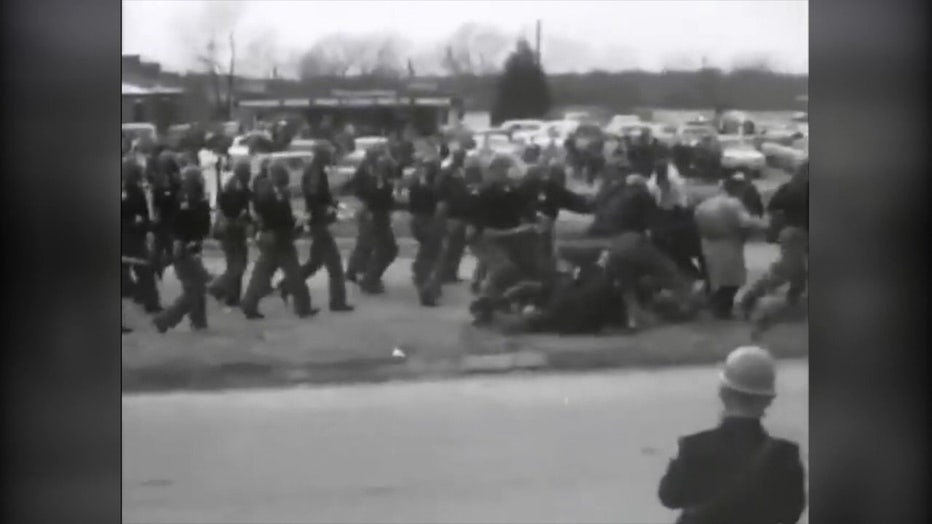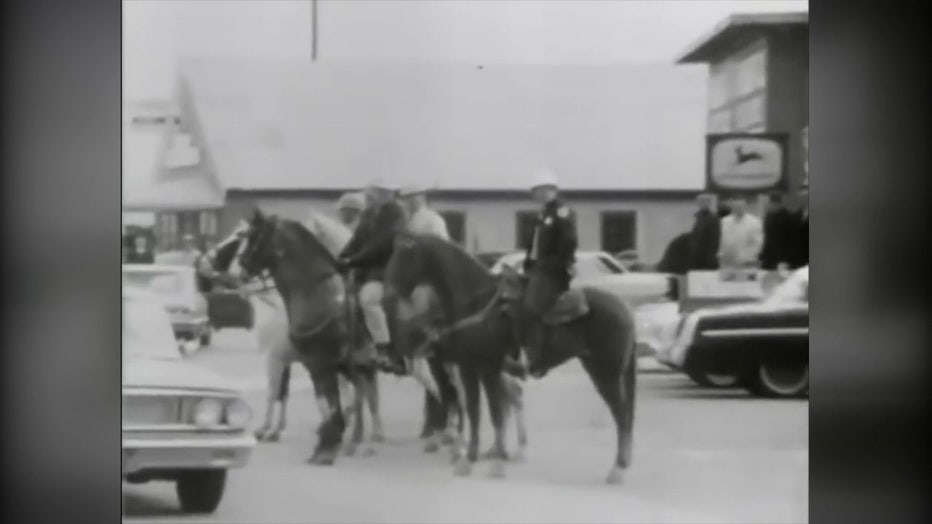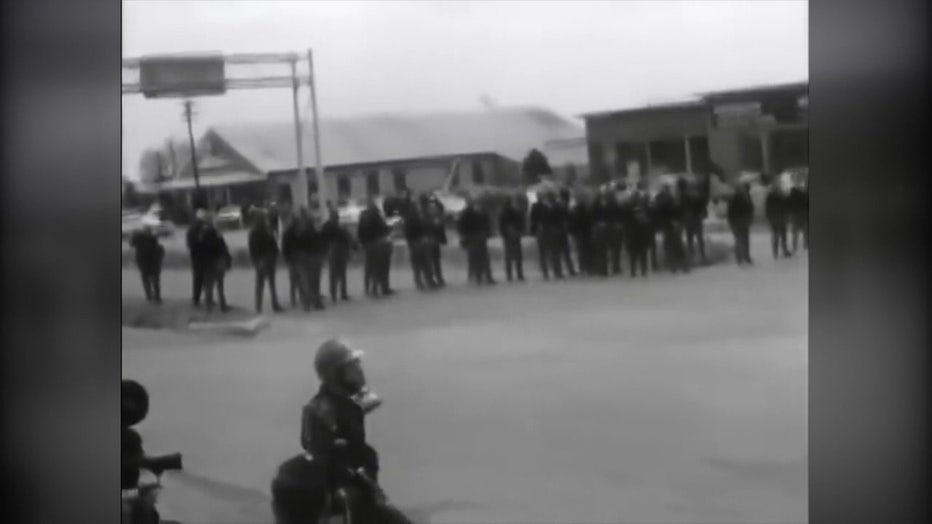America’s Path to Equality: Bloody Sunday

America’s Path to Equality: Bloody Sunday
FOX 13 Chief Political Reporter Craig Patrick tells the story of Bradenton native and Tampa professor Richard Smiley, who marched in the 1960 march in Selma, Alabama, a key turning point in the Civil Rights Movement.
TAMPA, Fla. - This month, our nation remembers the heroes of Selma, Alabama. Sixty years ago, they marched for voting rights, survived brutal beatings, and inspired the Voting Rights Act of 1965.
Richard Smiley is a retired Tampa professor and expert on the civil rights battle of Selma.

PICTURED: Richard Smiley.
"I think Selma is the foundation," Smiley said. "They were ready to die for the right to vote."
The backstory:
He can teach us more about that than he ever cared to learn.
READ: America’s Path to Equality: The Selma Movement
As a child, Smiley moved from Bradenton to a foster home in Selma, Alabama, at its moment of truth. White supremacists who ran Selma confronted black students who peacefully resisted them.
On paper, it looked as if blacks could register to vote. But this southern town (like many others) put up so many obstacles that most could not do it.
In 1960, nearly half of Selma's population was black, but less than 1% in (Selma's) Dallas County succeeded in registering to vote.

Photo from the 1960 March on Montgomery in Selma, Alabama.
Smiley said he knew a lot of white people who wanted that to change at the time, but they did not act.
"A lot of whites didn't believe in all this stuff that was happening in Selma, but they couldn't speak out," Smiley said. "That would have been a very dangerous thing for them to do. They could have been killed. They could have lost their homes. Everything that happened to us could have happened to them and worse."
Dig deeper:
When the freedom rider and Tampa native, Bernard Lafayette, came to Selma and organized peaceful protests for voting rights, Smiley found his calling.
READ: America’s Path to Equality: Selma and the Tampa Connection
When Lafayette joined forces with Dr. Martin Luther King and announced plans to put Selma in the national spotlight by marching to Montgomery.

Bernard Lafayette with Dr. Martin Luther King.
Smiley faced another obstacle – this time from his social worker.
"She advised me that if I walked from Selma to Montgomery that I would be kicked out of my foster home," Smiley recalled. "I don't think she had a racist heart. I just think she had a concern for her and her job. I understand her job, but I had a moral obligation to march from Selma to Montgomery. That was part of the sacrifice. That's how much it meant to me."
The foster system tried to discourage him by questioning his sanity.
"They would send me to a psychologist. They gave me all those tests, block tests and all of that," Smiley said. "But the amazing thing about a psychologist he shared with me. He said, ‘Look, there’s nothing wrong with you. You need to continue to fight for your people.’"
Why you should care:
That led him and around 600 others to America's climactic battle for voting rights in Selma on the cold and overcast day of March 7, 1965.
READ: Tampa's Path to Equality Part 1: The First Steps
King’s group (the SCLC) sent Hosea Williams, who had helped ignite the St. Augustine movement in 1964. Lafayette's group (the SNCC) sent its chairman, 25-year-old freedom rider John Lewis, to co-lead the march.
Smiley is 16th in line. He's also 16 years old.
"We don't know what's going to happen this day. Now, we've been to jail. We've been. But this was a different day," Smiley said. "Our knees were knocking."

Photo shows police on horses during the violent altercations with March on Montgomery marchers in 1960.
Alabama’s segregationist governor, George Wallace, said they wouldn’t make it, and he dispatched his forces to the other side of the Alabama River.
Smiley saw them as they crossed the Edmund Pettus Bridge.
"We saw about 150 (or) 200 state troopers with gas masks on," Smiley said.
Smiley also saw the sheriff’s posse on horseback along the side of the road.
And they see the sheriff's posse riding along the side of the road.
READ: Tampa’s Path to Equality Part 3: 'Election of the Century'
"There were just people, regular people on horses with billy clubs and cattle prods. They were deputized by the sheriff," said Smiley. "And once we crossed the bridge, the state trooper told us the march was illegal."

Police blocking the road where marchers were preparing to protest during the March on Montgomery.
The attack started with troopers pushing into the line of marchers and shoving them to the ground. Students near the back of the line hear the loud pops they assume are bullets.
"I thought they were killing the people down front because that's the first thing we heard," said Jo Ann Bland, who participated in the march.
The sounds are actually caps popping off of tear gas canisters. The tear gas hid many, but not all, of the beatings that followed.
Photos show Lewis, who would go on to be a future congressman and civil rights icon, collapsing as a trooper fractured his skull.
"I could hear John Lewis's head get beat. When I realized, I was so close. I say, well, I think we (are) too close," said Smiley.
Smiley ran into a plume of tear gas as he and other victims staggered back across the bridge, the sheriff’s posse following them behind the sheets of smoke.
READ: Tampa’s Path to Equality Part 4: The Sit-ins
"So, we were beaten on one side of a bridge and then on the other side of the bridge," Smiley said.
Big picture view:
The images stunned much of the nation and drove change in Washington. President Lyndon B. Johnson later addressed a joint session of Congress and called for a Voting Rights Act.
"Really, it's all of us who must overcome the crippling legacy of bigotry and injustice," said Johnson. "And we shall overcome."
King and thousands of others then converged on Selma to complete their 54-mile march to Montgomery and compel Congress to pass the Voting Rights Act.
READ: Tampa rapper, Doechii, was named Billboard’s 2025 Woman of the Year
"Once you get your head beat and busted, you're committed," said Smiley. "The victory is right around the corner."
Smiley returned from the March to Montgomery to discover he had been evicted from his foster home.
He slept in churches and office floors as he continued the peaceful protests and efforts to register African Americans to vote.
What's next:
FOX 13 will continue its coverage of the Battle of Selma on the 60th anniversary throughout March.
The Source: FOX 13's Craig Patrick collected the information in this story.
STAY CONNECTED WITH FOX 13 TAMPA:
- Download the FOX Local app for your smart TV
- Download FOX Local mobile app: Apple | Android
- Download the FOX 13 News app for breaking news alerts, latest headlines
- Download the SkyTower Radar app
- Sign up for FOX 13’s daily newsletter

